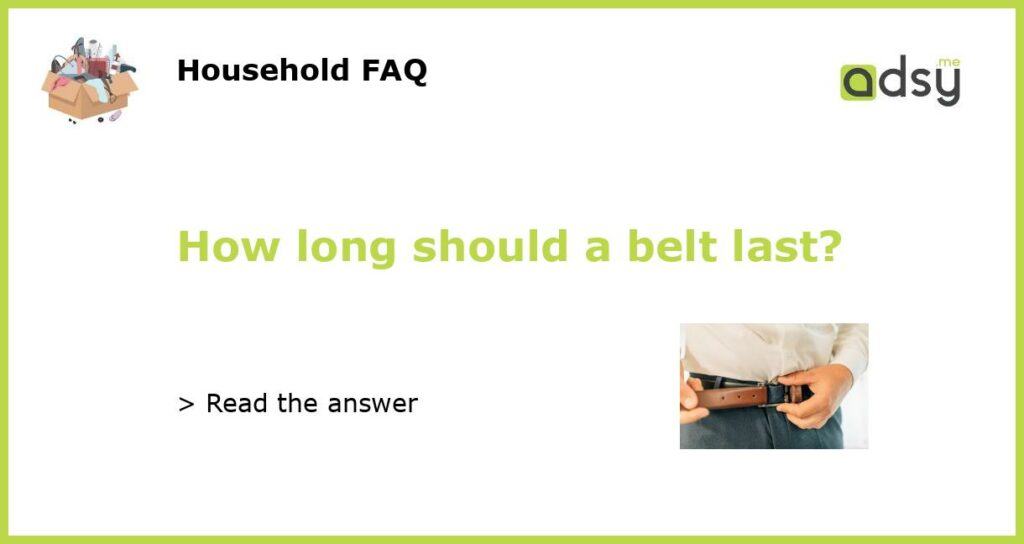Understanding the Lifetime of Belts
Belts are an essential accessory for both men and women. Apart from holding pants in place, they are also a fashionable item that complements one’s outfit. However, with frequent use, belts tend to wear out and lose their elastic properties. This raises the question: how long should a belt last?
The Factors Affecting Belt Longevity
There is no definitive answer to the lifespan of belts. It depends on different factors such as the quality of the belt, frequency of use, and maintenance. Furthermore, the rigidity of the belt buckle, weight of the wearer and the style of wearing the belt all impact the lifespan of a belt. If a belt is regularly used and not properly maintained, it will result in the belt wearing out faster.
Quality over Quantity
The quality of the material used plays a significant role in the lifespan of a belt. Top-quality leather, nylon, and other materials that are used to make a belt will last longer than their lower-grade counterparts. While belts may be expensive at first glance, investing in a high-quality one will save money and time spent replacing belts frequently. Therefore it pays off to get the highest quality belt that fits one’s budget.
Maintaining Belts for Lasting Use
To ensure a belt lasts, it is important to maintain it regularly. This involves storing the belt in the proper conditions, such as dry areas and away from direct sunlight, which causes the leather to discolor and dry out. Also, avoid overstretching the belt or hanging it from a door handle or hook, which adds undue tension on its structure. Regularly inspect the belt’s holes and buckle for any damage and repair it promptly to prevent further damage.
Know When to Retire a Belt
Regardless of the quality of the material and maintenance put into a belt, there comes a time when retirement is necessary. Signs of wear and tear such as cracks in the leather, loose stitching, stretched-out holes, or a broken buckle are all indications that the belt has reached its limit. It is time to replace it.
In summary, the lifespan of a belt depends on different factors. However, investing in a quality belt and proper maintenance is key to ensuring it lasts as long as possible. Still, it is essential to keep an eye on the belt’s signs of wear and know when it’s time to replace it. By doing so, you can keep wearing belts as a fashion accessory or a functional part of your wardrobe, while getting the most out of your investment.






